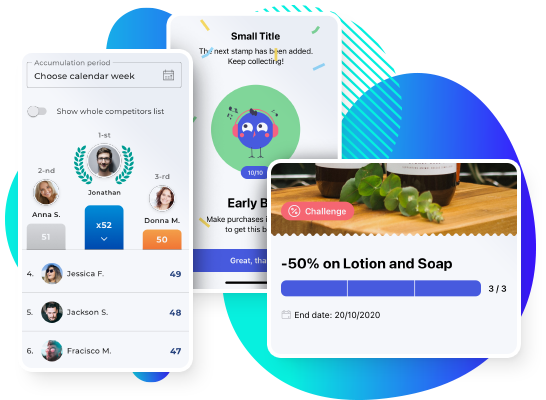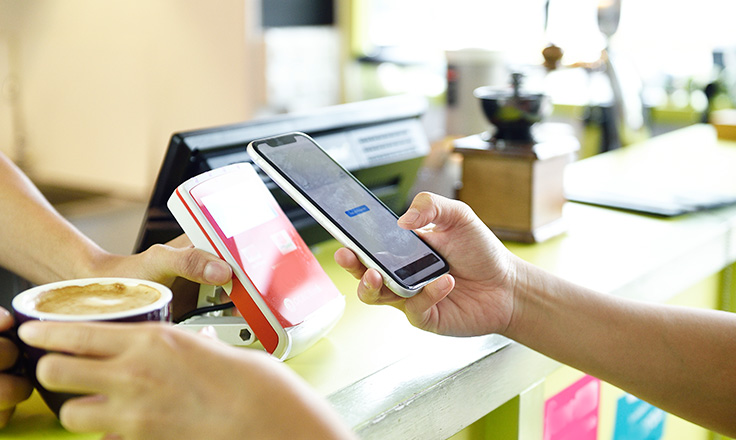What is Zero-party Data and Why Will it Become so Important?
- Published
- 6 min reading

What is zero-party data?
Data is being collected on individuals and exchanged everyday between systems and third parties, but soon the tools to collect this data are radically changing. In order to understand why zero-party data is so important we must first understand the various ways that data is currently being collected.
Third-party data
Data purchased from outside sources that aren’t your own. This data is typically purchased from data aggregators, advertisers or platforms such as Meta or Google. This is very valuable in connecting brands with customers they have no previous interactions with, but third-party data is also the most unreliable of all data types as it is typically pulled from a large pool of data and openly sold.
Second-party data
Obtained by a company via first party data collection methods and then is sold to another company. The key difference between second- and third-party data is second-party data is usually specialized as it often obtained through strategic partnerships and specific deals instead of openly sold like third-party data.
First-party data
Directly obtained from a user via their behavior on a company’s website or mobile app. Examples of this are sections clicked, scrolling/hover time, active time spent in session, purchase history, and browsing data.
Zero-party data
Obtained directly from your users. This data is often most valuable and accurate amongst all data types. The reason being is your customers are willingly giving up this information to you so you can trust the source more implicitly. New methods of zero-party data collection are evolving everyday but currently this information comes from surveys, customer profile information, and pop-up questionnaires.
While third-party data can sometimes be unreliable, first and zero-party data can typically be very trusted as the information is coming directly from your customer in both cases. The main advantage of zero-party data over first-party data is that your customer is knowingly and freely giving you that information to act on so generally they are excited to receive something related to that information. On the other hand, since first-party data is not implicitly given, there may be more apprehension among consumers to respond to any marketing campaigns or promotions that was derived from the first-party data. This is just one reason why zero-party data is so valuable.
Why is zero-party data important?
With all these various methods of collecting data, you might wonder why we need to focus on zero-party data so much as it seems simple to get data you need without doing the collecting yourself. It is imperative you are sourcing your own data in addition to any outside sources you are receiving for a variety of reasons:
The data collection landscape is changing
We are entering a new phase of data collection due to new privacy regulations which have been a hot topic of debate after scandals such as Cambridge Analytical and documentaries such as “The Social Dilemma” have begun to open consumers’ and legislators’ eyes about how valuable data is and how it can also be misused. This trend of data protection will likely only continue so the time to develop your own methods of zero party data collection is now.
Third-party data tools are disappearing
In response to this these trends, companies like Google and Apple are completely revolutionizing the way they collect and share data. Google is focused on removing the infamous “cookies” from its web browser that has been the leading tool in third party data collection. Of course, they won’t be eliminating data collection entirely, but most of their data will be stored in house and outside parties will not have nearly the same level of access available to them. Apple on the other hand is putting the ball back into the consumer’s court and giving them the option to allow information to be exchanged between apps.
These are just the start of the changes to data collection and with each change third-party data becomes more and more unreliable so you as a company must be proactive in your data collection and develop some tools for collecting zero-party data.

How to collect zero-party data
According to the Pareto principle, 20% of your customers provide 80% of the value, so if you can keep your best customer’s happy, engaged and feel rewarded your business will have a solid foundation. Customers are inclined to give up their information to a company if they feel they are receiving a more personalized and tangible benefit. Customers also prefer this route than the other data collection methods as its less likely to appear like they are being spied on or listened to by their devices. How you collect zero-party data can depend on your member base and their preferences but there are quite a few established methods which have generated great success.
Member attributes
The most basic is capturing data from a member’s profile either upon enrollment or after the fact. This gives you the chance to collect some preferences from your customer beyond their basic demographic and contact information.
Pop-up quizzes
Another great method of catching and instantly utilizing a new user’s attention is giving a small pop-up questionnaire to your customers that contains just a few questions that once answered will direct them to specific products that fit their interests.
Questionnaires
Once you have a strong customer base you can also send your customers direct surveys which can range from details of level of service, specific products or preferences they are interested in, or general overall feelings of your brand.
Online polls
Another popular feature being implemented today are online polls where members can vote on their choices for things like next month’s special release, their favorite designs, etc. This helps to give members a feeling of belonging and participation in the company’s direction.
Contests/competitions
One way to drive engagement in your campaigns and promotions is to create an online competition amongst your customers where the top participants are granted an extra bonus on top of the regular promotion. These contests can be centered around certain information submitted or actions taken by your customers and can be incorporated into your zero-party strategy.
All of these methods have their advantages, but the true road to success lies with utilizing a combination of these methods. Not all of your customer base will respond with the same level of enthusiasm to each method, so it is always wise to diversify your zero-party data marketing amongst your entire platform.
How to use zero-party data
Now that you have obtained a new higher level of data via your zero-party data strategy it is important that this data is not wasted. Make sure you understand your objectives before you launch your data collection, or it will be worthless. You are less likely to have customers repeat your data collection methods if they aren’t seeing a tangible benefit. Customers are tired of their data being harvested without being rewarded. There are also many ways of utilizing this data to reward your customers.
Quick and easy enrollment process
Zero-party data should be used to ease enrollment by collecting the necessary minimal data points but also can be paired with a reward incentive if they complete a quiz that gives additional member profile answers. This combination can help lower customer acquisition price and start off your customer with a quick and easy signup as well as feeling rewarded for providing additional data points. This in turn helps to transform your program into a zero-party data platform.
Targeted messaging
Once customers start giving you their preferences you can tailor your communications to each member in the form of newsletters, informational videos/blogs that are sent out, invitations to live events/workshops, new product campaigns and promotions, etc. to the customers who are most interested in those areas which should increase your acceptance and participation rates among customers.

Benefits from zero-party data
As we’ve highlighted, your time to utilize third-party data is running out as third-party data becomes harder to capture and, overall, more unreliable. Your ability to capture and utilize zero-party data from your customers will reap immense benefits. With zero-party data you know the data quality is reliable so you can act on it with more confidence and can translate into tangible results:
1. Building more personalized campaigns
Your customers are telling you exactly which products and services they care for more, so you know exactly what to offer them. A clothing retailer, for example, can target customers by their favorite season or article of clothing and target new releases specifically for that segment. Once your campaigns become more personalized your customers will no longer see those as spam, but instead will be eager and excited to see the new campaigns and engagement will rise.
2. Improved forecasting
When you are collecting zero-party data from customers, you have the ability to employ your data collection for future events as well instead of just reporting on data from past behavior. This allows you to gauge interest on future releases or events to see what your members really desire going forward. For example, sending out a survey to your members on potential new products launching next year.
3. Simplified enrollment
When customers feel valued for their data they are more willing to give it up. This can play into easing your enrollment process by requiring fewer mandatory data collection points upon enrollment. Instead of being bogged down by a long enrollment process your members can give bare minimum details to get started in the program and then enter that information after the fact as they find out how much these answers benefit them and their experience.
4. Improve rewards
When you receive direct customer feedback your members can let you know how they want to be rewarded so you can tailor your promotions to hit those desired rewards and increase engagement & satisfaction. These rewards can also be applied to your referral program and turn your members into brand ambassadors.
How Comarch can help guide you through the new era of zero-party data
As a leader in the loyalty industry, Comarch has kept a close eye on the evolving landscape of data collection, processing and regulation. As we have seen and discussed where this landscape is heading, zero-party data collection, in GDPR compliance, has been a key cornerstone of our Loyalty Platform. Within our loyalty platform you will have access to a wide range of first party data such as transaction details, rewards redemption, participation within your program which combined with our zero party data collection tools will surely help gain and retain customers at a much higher rate. Some of these tools include:
- Custom attributes
Every program has member details it collects such as name, age, home location, etc. Our program gives you the option to create custom data points you want to collect from your members in a date, text or number format. These data points can be optional or mandatory depending on your preference and can be required for enrollment or adjustable within the member profile area. Once your members have submitted answers for these attributes, your member will automatically be assigned to any segments related to those attributes. Ideally, those segments would include personalized targeting for promotions and campaigns. - Surveys
We have gone a step further and are expanding on the custom attribute methodology. Instead of simple data collection points, surveys allow you to send out more in-depth questionnaires to your members which can be used to gauge interests in new products or services ahead of time. These answers can also be fed into your segmentation tool for increased personalization and communication to your members. - Tailored content
After employing these data collection tools you must now utilize that data properly or your customers will be less likely to volunteer their personal information. In combination with your platform’s data analytics and marketing automation tools you will be able to personalize discounts, newsletters, campaigns, invitations to your customers on an entirely new level. You will even be able to tailor your communications to their preferred medium and timing. Our artificial intelligence and machine learning are working in the background to determine your customer’s lifetime value and the source of this data is integral to the results.
Our strategy and consulting experts are constantly learning the newest methods of data collection and helping our system evolve to meet those needs. Learn more about this process and if the Comarch Loyalty Management System is right for you, here.
Frequently Asked Questions about Zero-Party Data
What is zero-party data?
Zero-party data is data directly shared by your customers with your company, often proactively. This data is often the most reliable among all data types.
How to collect zero-party data?
Zero-party data can be collected in various ways:
- Account information
- Pop-up quizzes upon visiting
- Customer surveys
- Online polls
- Contests
How to use zero-party data?
Zero-party data should be used to increase your level of personalization when interacting with your customers. This can range from more in depth and personalized marketing campaigns to ensure your customers see the products they care most about as well as speeding up your enrollment process as you can capture the data in more ways than just one.



